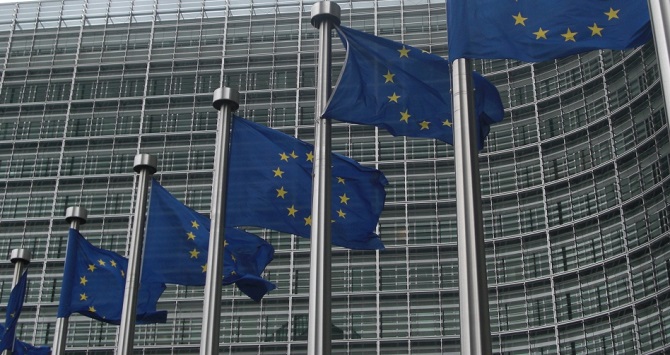Following the adoption of the Strategy for the Rights of the Child by the Council of Europe, LSE’s Sonia Livingstone outlines the impact that the Strategy will have on children’s online rights and argues that there is a need for considerable public debate to address the challenges of policy coordination for the 47 member states involved.
What rights do children have online? And who will ensure they are addressed?
The first of these questions is often answered simply, by saying: “Rights that people have offline must also be protected online.” What’s less clear, at least in practice, is whether children are included in the category of ‘people’, especially when they are rarely represented in internet governance deliberations or remembered when designing terms and conditions or other consumer-facing services.
The second question is rarely answered with clarity. Stakeholders concerned with child rights are not always alert to the challenges of the digital. Those concerned with internet governance and digital rights are not always alert to the specific needs and rights of child users. Governments are struggling to work out what they can require of transnational commercial providers. Parents and teachers are struggling to keep up.
On 2 March 2016, the Committee of Ministers of the Council of Europe formally adopted the third Council of Europe Strategy for the Rights of the Child. On 5-6 April 2016, the strategy was launched in Sofia under the Bulgarian Chairmanship of the Committee of the Council of Europe by President Rosen Plevneliev, thereby initiating high level deliberation across and within the 47 member states. This third iteration of the Strategy, for the first time for the Council of Europe and, arguably, for the first time in any major international organisation, recognised the rights of the child in the digital environment as a priority area, one of five identified as crucial to guarantee the rights of children in Europe.
In recognising the importance of the digital environment for children’s rights, the Council of Europe is pioneering among international child rights organisations and its leadership in this regard should be widely welcomed. Its strategy is framed by the UN Convention on the Rights of the Child and the European Convention on Human Rights. Its action plan for the digital environment emphasises that all three P’s – participation, protection and provision – matter in specific ways in the digital age, and are to be prioritised in a way that is non-discriminatory and in the best interests of the child, so as to support children’s right to life, survival and development, as well as their right to be heard.
A growing body of research – in Europe (see EU Kids Online’s findings here) and internationally – is now scoping how the three P’s apply online, and where the risks and opportunities for children are to be found. But evidence doesn’t always translate neatly into policy and practice.
This is often because, as I observed in my opening remarks to the Sofia conference, the evidence reveals some key tensions, even conflicts, between:
- the child’s right to protection from harm versus the child’s right to participate – consider, for instance, arguments over whether social networking sites should be accessible to young teenagers.
- the child’s right to protection versus adults’ speech rights – consider, for instance, arguments over content restrictions in relation to pornography or various forms of censorship.
- the child’s right to information versus the parent’s right to protect them – consider, here, arguments over access to sexual preference or sexual health information.
- child- versus adult-centred conceptions of harm and benefit – consider the case of “sexting,” where some teenagers have been criminalised for what they might judge legitimate sexual expression.
It will take a lot of public debate, research evidence, expert deliberation and cumulative case law to address these tensions and find ways ahead.
One practical question concerns the coordination of this debate and deliberation, if we are to avoid the tendency – rather common so far – for a ministry of justice to implement restrictions that undermine opportunities that the ministry of education wishes to promote, or for a ministry of business to inadvertently generate new risks that the ministry of justice will urgently have to address. As EU Kids Online’s analysis of policy influences showed, countries with a coordinating or centralised body tasked with ensuring children’s online rights, empowerment and safety tends to be more effective in advancing good practice and avoiding problems than those without.
Another concerns the trend whereby states, although they bear the primary responsibility for the realisation of children’s rights, increasingly apportion responsibilities to the internet industry for legislative, policy and rights frameworks, due to the fast-changing, complex and transnational nature of the digital networks that increasingly mediate children’s lives and, therefore, their rights. In this potentially treacherous territory, the UN’s guiding principles on business and human rights provide a structured path. More specifically, UNICEF is now consulting on its child online safety assessment tool for businesses. Although not focused on children, Ranking Digital Rights’ Corporate Accountability Index suggests a further possibility for assessing how well users’ rights are respected in digital environments.
Yet further creative proposals will be needed as the Council of Europe develops its work over the coming few years, to realise its ambition that:
“All children should be able to safely access ICTs and digital media, and be empowered to fully participate, express themselves, seek information and enjoy all the rights enshrined in the UNCRC and its Optional Protocols without discrimination of any kind.”
This blog gives the views of the author and does not represent the position of the LSE Media Policy Project blog, nor of the London School of Economics and Political Science.







1 Comments